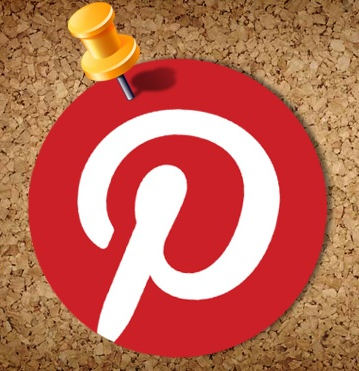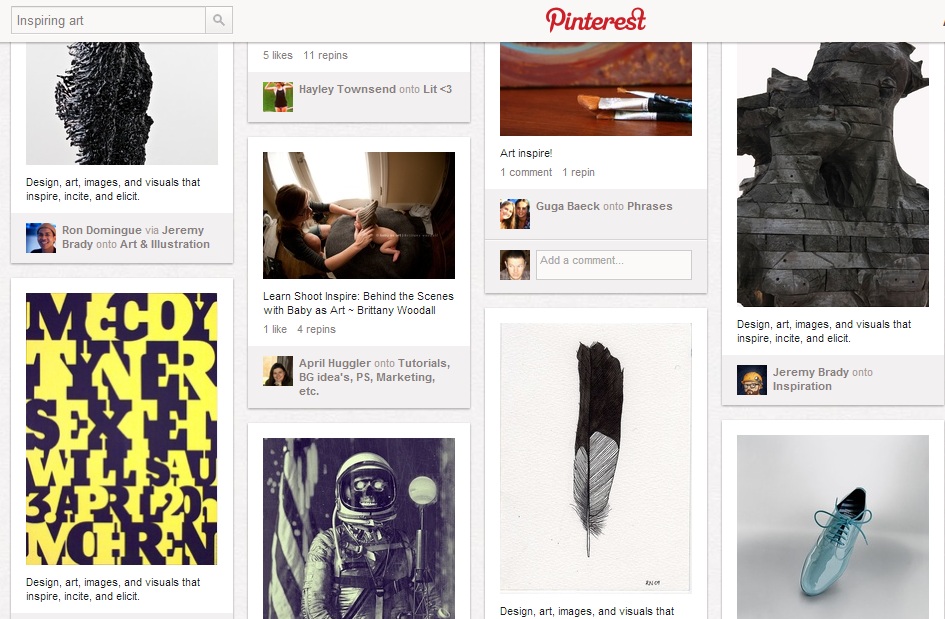 I know, I know, another bloody social network to add to add to the pile. Add some pinning to your tweeting, ‘booking, and blogging schedule and pretty soon you’ll be able to give up this music lark entirely, right?
I know, I know, another bloody social network to add to add to the pile. Add some pinning to your tweeting, ‘booking, and blogging schedule and pretty soon you’ll be able to give up this music lark entirely, right?
Well just for you poor, beleaguered souls, I’m going to start this one off by listing some of the reasons you might not want to be on Pinterest:
- If your fans are mostly male. Estimates run that over 3/4 of Pinterest users are women, backed up by the firm stat that 97% of the Pinterest Facebook fan page likes are female (AppData 2012). Although this has probably evened up somewhat as the site has grown, it’s fair to say that a metal band with a predominantly male audience can spend their time more productively elsewhere.
- If you have no artist hub site. You’ll need a place to connect the visual angle you present on Pinterest to the music that we’re hoping to nurture new eyes and ears towards. If you don’t have a site that you control to achieve that, then we have bigger fish to fry. Ask me why.
- If you’re already neglecting your existing social platforms. Don’t invest time you don’t have. Spend that reviewing what sites you have, which you need to trim away, and commit to developing the one or two you keep. Come back here in six months if you get that together (or immediately, if Facebook eats Pinterest).
- If your music has little in the way of visual imagery. This one is fairly weak, as every subject can be spun into a visual in some way, but some may be less intriguing than others. The basis of the rising image-based social platforms is communicating something via a striking visual, so if you have no inspiration to that end then feel free to excuse yourself.
- If you hate puns. Seriously, pinsanity can set in pretty quickly and you probably get that enough from your tweeps already.
Still here?
Great! Then let me explain why Pinterest is going to be worth your time.
How Musicians Can Use Pinterest to Attract New Fans
We’ll assume that you’re already signed up and have the standard boards – ‘Places & Spaces’, ‘Books Worth Reading’ and the like – ready to go. At this point, two questions unfold in front of you: What do I pin and where do I pin it?
Being just over a year into its rapid ascent, both the joy and the trial of pinning is that there are no well paved roads to success. Experimentation is to be encouraged, but do follow the shining social netiquette that you would on other sites… share the work of others, don’t spam (or sell to the point of it), and give back more than you take out.
That said, here are some ideas to get your boards hanging alluringly in the sights of fellow Pinheads (errr….):
- Associate your songs with appropriate imagery. This may be an iconic location, landmark, work of art, piece of literature, or anything you can find that both fits the theme of the song and is also a striking visual. Connect image and audio on a single page of your site, explain briefly your inspiration, then pin the image to an appropriately titled board (‘Artistic Inspiration’ or ‘Sparks for Songs’ spring to mind).
- Explain your own influences. Create boards that pull together your favorite writers, painters, philosophers, and anything or anyone else that has Keep in mind that the better known they are, the more searched and therefore visible they will be on Pinterest. Nonetheless, you should keep this authentic and an honest expression of who you are as an artist and the inspirations that brought you here.
- Add your lyrics to existing works of art. Pin your favorite pieces of art (from your favorite site or by searching within Pinterest and using the ‘Repin’ option), adding suitable lyrics or poetically-inclined thought that you yourself have written.
- Blog with visuals in mind. Begin to integrate images into the heart of some of your blog posts, in a similar way to the first tip here, but include the work of others and anything visually alluring that catches your eye. Take this one out to the real world, snapping anything that stirs words or music in your soul… this could be a board in and of itself!
- Repin others, often. Take time to follow people with similar artistic vision/tastes and take time to browse your stream for pins that catch your eye. Repin them and add your own (brief) comment as to the inspiration for doing so.
- Collaborate with visual artists. This may take more effort, but if you have artist friends, look for opportunities to connect your sounds with their visuals. This could be anything from a blog post (see above) about the connection, to a full blown collaborative project like a video or audio-visual mini-site.
- Create a variety of boards representing your artistic tastes. Users can ‘Follow All’ but will be more likely to follow only specific boards, so as to fit to their interests and keep their pin stream free from clutter. Increase your chances of connecting by offering of wide range of interest touch points.
- Don’t forget the admin basics. Ensure you complete your bio and location, include links back to your website, and consistently use key words or phrases that represent your music and creative tastes for other users to easily find.
These are just some starting points for your exploration. Try out variations on the above to see what your followers show most interest in. Keep what works, discard what doesn’t.
Take aways:
- Keep strong visuals at the heart of everything you do on Pinterest, from board creation to individual pins.
- Remember that Pinterest is a strong driver of traffic to source sites, so incorporate your images into your own hub, associated with your music wherever possible.
- Vary what you pin and think up relevant categories to slot them into, so that you build up some attractive, inspiring collections for people to stumble upon.
How does this all sound… artistically invigorating or another colossal social time suck?
If you think this is of value to you, connect with me on Pinterest and I’ll be happy to discuss approaches with you.








.